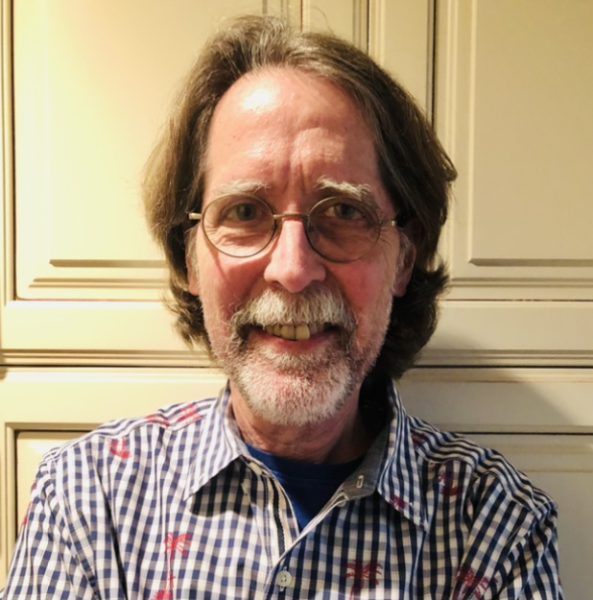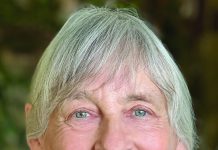Laguna Environmental Groups Come Together
By Gary Stewart
 On Monday, Sept. 18, approximately 65 people from multiple Laguna environmental groups came together for a joint meeting at St. Mary’s Guild Hall. Gayle Waite of the Laguna Canyon Conservancy, the group that organized the event, introduced representatives of various groups who described their goals and activities.
On Monday, Sept. 18, approximately 65 people from multiple Laguna environmental groups came together for a joint meeting at St. Mary’s Guild Hall. Gayle Waite of the Laguna Canyon Conservancy, the group that organized the event, introduced representatives of various groups who described their goals and activities.
First up were two representatives of the Natural Communities Conservation Plan/Habitat Conservation Plan (NCCP/HCP). They reviewed the history of this statewide effort to protect biological diversity, involving plants, animals and their habitats while allowing “compatible and appropriate” economic activity. They pitched for the City of Laguna Beach to become a signatory to the County of Orange Central/Coastal Subregion and pointed to species protection, trails, open space, access to research, and vegetation surveys. and the certainty that the NCCP regulations provide to the development community, which are designed to ensure “no net loss of habitat value.” There were no remarks addressing the potential downsides to city participation.
Norm Grossman explained that since 1968, the Laguna Greenbelt has protected 22,000 acres surrounding Laguna and that the open space agreement should be updated in the 2026 election. Zoning issues are paramount.
The Greenbelt’s other major issues are power line undergrounding, maintaining the rural atmosphere of Laguna Canyon Road and completing the east-west animal corridor to address the biological island of the coastal wildlands, which leads to weakened animal populations due to interbreeding. The multiple difficulties with the current connecting tunnel (long, dark, wet) have led to an effort to provide bridging instead.
Peggy Milne of CANDO, an alliance of neighborhoods in the canyon, spoke knowledgeably and passionately about low density, small-scale and biological diversity and the need to update plans to avoid industrial overwhelming, insisting upon “smart” compromises. In particular, she spoke about a proposed 20,000-square-foot LCAD Student Center at Big Bend, which will require expert analysis. Jacky Cordero, interim director of the Laguna Canyon Foundation, explained that the Foundation recently completed a complex 5-year strategic plan, which addresses a major expansion of their educational outreach to include middle and high schools, trail maintenance, fuel modification, habitat restoration (e.g., removal of invasive species), etc.
Anne Caenn, as president of Village Laguna, directed her comments to less strictly environmental issues, such as maintaining Laguna’s unique village character, school district changes, promenade re-design, parking allotment for restaurants, opposition to a new parking structure, support for renovating the historic digester and attending to the issue of ADUs. Mike Beanan of the Laguna Bluebelt Coalition had gone surfing earlier in the day and explained, “I like to always show up to meetings with salt in my hair.” His organization casts a wide net, addressing the Marine Protected Area, kelp forest restoration, storm drain sensors, the extension of the no-take zone at Three Arch Bay, berm protection, and estuary protection. He ended by recruiting folks to become a “berm buddy.” There was then a call for informal remarks.
Tom Osborne spoke about climate change, a phrase that had not been mentioned by any previous speaker. He tied all the concerns of the evening’s presentations together and encouraged climate activism, such as with Citizens’ Climate Lobby, an international advocacy group, the local chapter of which he co-leads with his wife, Ginger.
Also attending, but not speaking, was Victoria Zagarino, deputy director of the Laguna Art Museum, who was there to network regarding the museum’s upcoming and always popular Art & Nature events.
It was an evening full of opportunity for a roomful of organizational leaders to hear what their equally motivated compatriots are working on to preserve the unique character of and access to the wildland interface and coastal boundary surrounding our town amid an otherwise fully built out metropolitan environment.
Dr. Stewart, a native of St. Petersburg, Florida, stopped in Nashville and St. Louis for education before arriving in Southern California in 1977. A happily married internal medicine physician with three accomplished children, he is equally enthusiastic about the arts (piano player, art collector, bachelor’s in English, widely read), the sciences (physician, climate activist with Citizens’ Climate Lobby) and fun.




